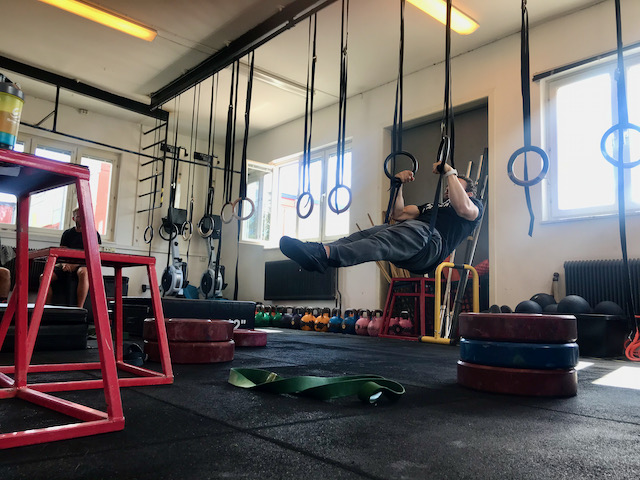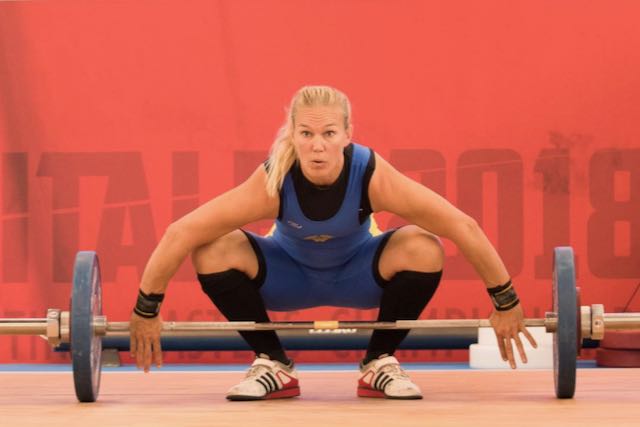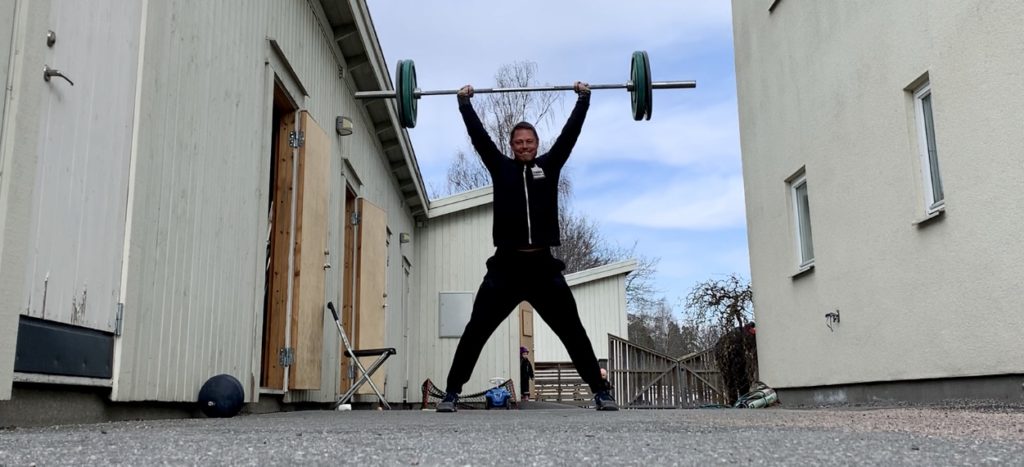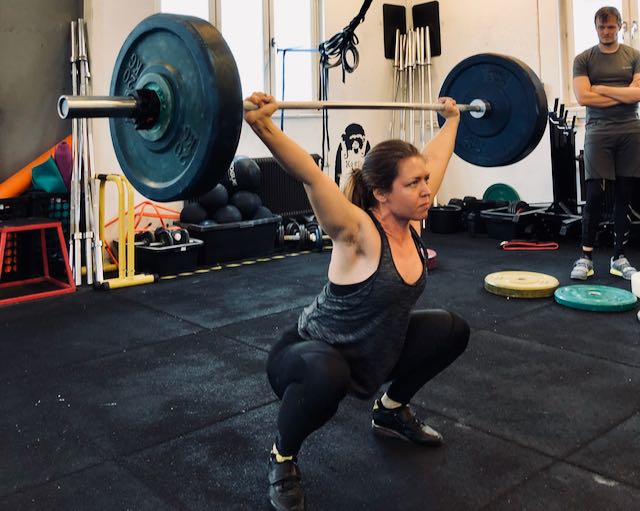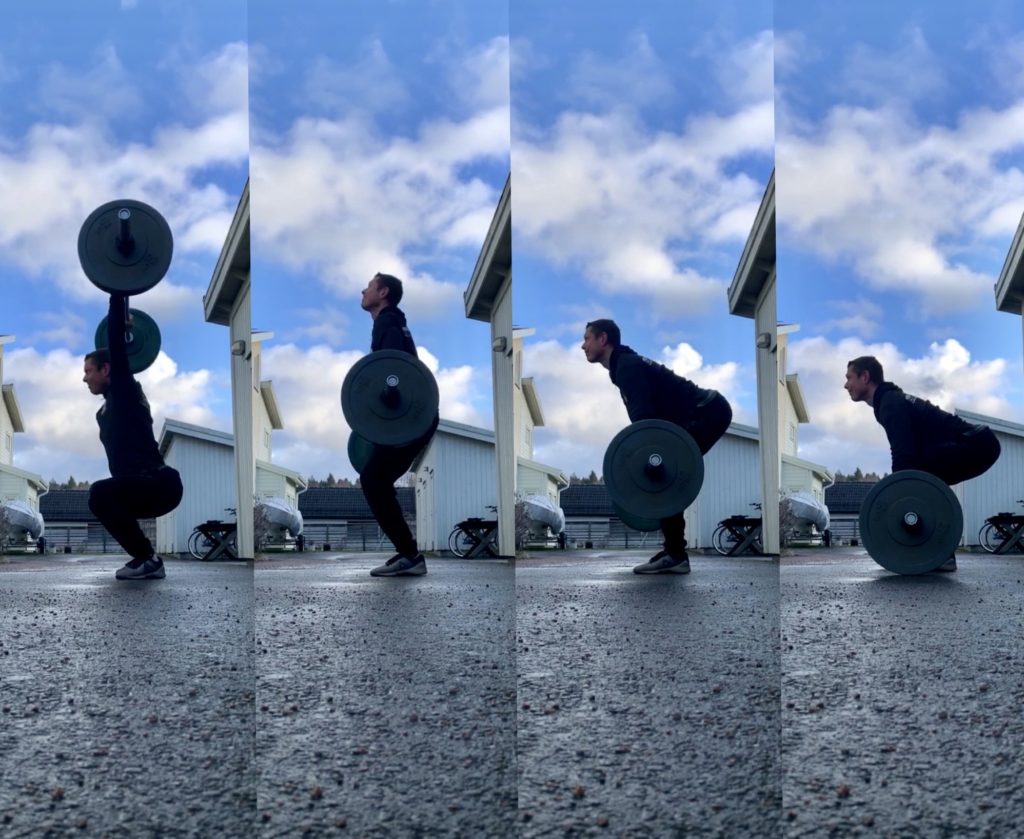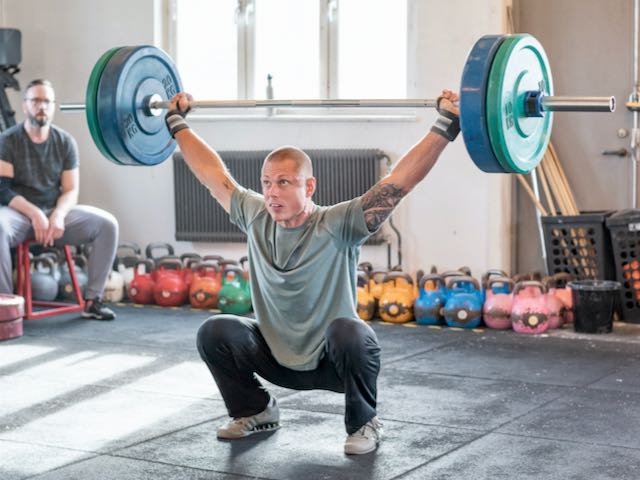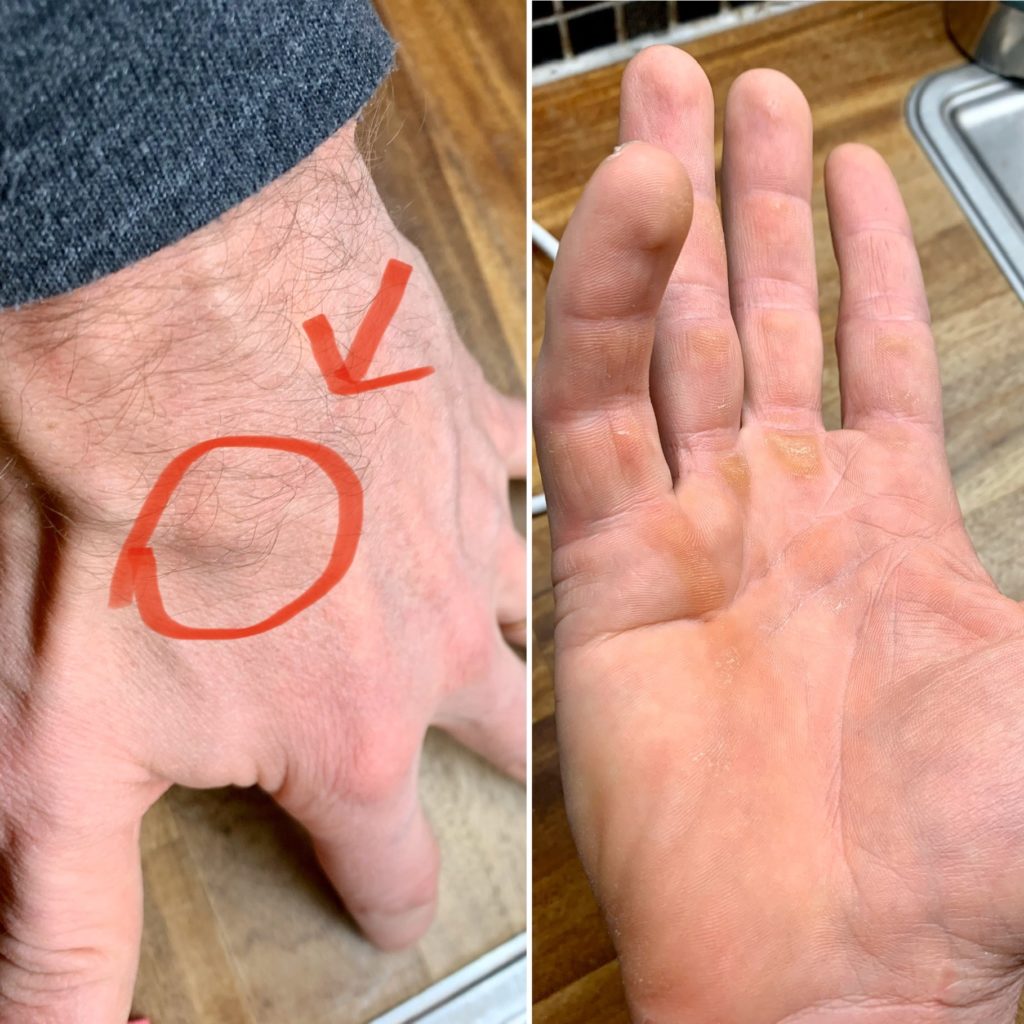“In early life I thought of studying economics, but had found it too difficult!”
Max Planck
In order to optimize performance, training theory has followed it’s fellow scientific endeavors looking deeper and deeper into details of their fields of study in a search for more detailed models of the world. These models are thought to provide more insight into underlying factors of performance. By uncovering them we can then design more meaningful training interventions. This manifests itself in metaphors like “the man as a machine”.
Similar to what Sigmund Freud did in psychology, when he presented the idea that thoughts and emotions outside of our awareness continue to exert an influence on our behavior. Even though we are unconscious of these underlying influences, physiology too has focused on hidden thresholds and reduced causal models of explanation for performance. The hope is to create better and more stable athletes built “from the ground up” and upon more basic conditions for performance than what can be seen with the eye alone.
While this project certainly has merits, it can also obscure the vision from what is “hidden in plain sight”. When searching for what is within and by looking deeper behind what is apparent, you will lose sight of how a scientific area is connected to other scientific areas: how things “just work” in the common world. When one has dug a deep enough hole, he can no longer see over the edge.
Complex biological systems (nature, humans…) are characterized by the fact that they consist of lots of interconnected dependencies in the different parts of its whole. A system constantly exposed to both sensitivity and noise, and a system of constant change.
It’s also quite easy to get stuck in a loop of trying to uncover more and more of these underlying factors, rather than to carry on with whatever knowledge we already have at the moment.
Better than using a detailed map to navigate an ever-changing landscape, like a glacier, would be to routinely triangulate your position and endure living with the degree of inaccuracy and uncertainty that comes with not knowing exactly where you are. Even though the belief in the perfect map gives a sense of security, it is a false feeling that risks leaving us blind to what is actually happening.
Simply observing what we have in front of us is often hard to do.
In order to be able to compare efforts and athletes we usually take the leap from qualitative observation to quantitative data collection, and by doing so removing them further away from the context where they were observed. How do you quantify “fast” or “slow” or “hard” or “easy” without delimiting them by turning them into numbers? Numbers fit so much better in spreadsheets for statistical analysis.
Not only are we by doing so removing the effort out of its context, we are also risking to try to affect these new numbers rather than the situation they emerged in.
You don’t want your planes to get shot down by enemy fighters, so you armor them. More armor makes a plane heavier and heavier planes are less maneuverable. They also use more fuel. Armoring planes too much is a problem; armoring planes not enough is also a problem.
During the second world war the American army was studying the planes returning from battle and kept reinforcing the areas of the planes that had the highest number of bullet holes. However, more and more planes were lost despite their added protection.
This continued until the statistician Abraham Wald noted that the military only considered the aircraft that had survived their missions. Since they didn’t, or couldn’t, look at the specific battle situations where shots were fired, they failed to see the planes now rendered unavailable from assessment. Wald instead asked: where are there no bullet holes at all?
As aiming at moving planes is not that easy, especially in those times, he figured that the damage would have been spread quite equally all over the plane. Since this did not adhere to the observations, he was fairly sure he knew where the missing bullets were: on the missing planes.
The reason planes were coming back with fewer hits to the engine is that planes that got hit in the engine weren’t coming back. The armor, he said, shouldn’t go where the bullet holes are, but quite the opposite, where the bullet holes aren’t.
At the end they managed to logically figure out a way of protecting their planes. But all of this would have been quite clear if they had not only looked at the data, but also kept an eye on the actual action.
“Mathematics is the source of a wicked intellect that, while making man the lord of the earth, also makes him the slave of the machine.”
Robert Musil
The technology to measure oxygen consumption first arose in the early 1920’s. Using that ability Hill and Lupton found that there appeared to be a maximum limit to oxygen consumption, when despite increases in speed, their VO2 consumption did not also increase any more.
After this most studies in exercise science have been evaluated on the resulting change in VO2max rather than actual performance (such as ability to stay with a breakout, handling of different sections of a race, movement form or even something simple as average speed over a distance). VO2max is less variable and more tolerant to changing conditions. It also happens to fit well into columns of spreadsheets.
As outcomes are increasingly measured by a specific construct, they start to shape the outcomes themselves. Researching training interventions using this or that variable as the standard of success, will slowly shift the training interventions to strengthen just that variable rather than something else. They become self-reinforcing as you will always find more of what you are looking for, and less of what you don’t. Even though that variable might have a very poor transfer on actual sports performance (or health for that matter).
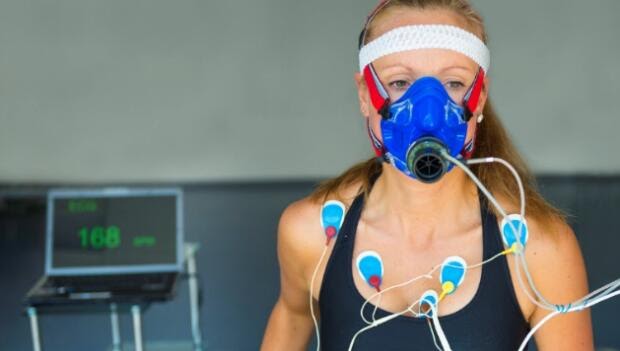
Several new ways of taking measurements of biological processes have had similar impact. With the ability to portably test lactate, research was centered on ways to improve lactate threshold. With the ability to measure force, other variables came into the limelight, such as Functional threshold power or Critical power.
If we all agreed on what math problem we were trying to solve, then we can sit down together and say, hey let’s calculate! But sport and life is messy. We might not agree on what we’re trying to optimize and we also have a lot of uncertainty about what the consequences of our actions will be.
Even with access to great data, not everything’s an optimization problem. Ultimately it is crucial that we understand the limits of the technology we leveraged to help us to navigate our complex world and the values that often invisibly determine how we use it.
“For years we have seen study after study attempting to compartmentalize intensity domains based on an assumption that there is some physiological decompensation point. However we reach no clear consensus on this. First it was MLSS. Then VO2 kinetics. Then FTP and CP, but none are conclusive. Perhaps we are looking for something that isn’t there.”
Dr. Jeroen Swart
We are starting to see why Max Planck, awarded the Nobel Prize, once said that he saw economics as a harder discipline than his own field of theoretical physics: due to the inherent need for subjective judgments. Dealing with humans, is dealing with unpredictability. This could certainly be said about exercise science too.
We often think of these measurable physiological variables as clear cut, defined markers. We use them to train at different thresholds and to classify our training as such. We assume that the transition is clear and that these parameters represent some sort of boundary line, and that improving them leads to better performance.
All of the above mentioned concepts can be helpful, and used to organize and guide training but we need to understand that they do not by themselves represent increased performance. That they do not represent a clearly defined transition. Physiology is complex and messy.
There is no sport of highest VO2max, Critical Power or peak wattage. We should not be so in love with a measurement so that we forget to look at how an athlete handles specific situations of their sports.
”I’ve seen things you people wouldn’t believe. Attack ships on fire off the shoulder of Orion. I watched C-beams glitter in the dark near the Tannhäuser Gate. All those moments will be lost in time, like tears in rain.”
Roy Batty, “Blade Runner”
When you put a pot of liquid water on the stove it is in a steady state. All of the collective molecules exist in liquid form. As soon as you begin applying heat and pressure the state begins to change. At any given point in time we are unable to predict which molecules will make the transition. They exist at the edge of chaos. Provide enough heat and pressure and over time and they will eventually turn into a gas.
Complex systems, such as humans, have interesting properties. Strong interactions between their parts, feedback, emergence, self-organisation, adaptation, growth, change. None of these are a simple linear process. Large interventions in a variable does not necessarily have a large effect on the expected variable of interest. Similarly, a small intervention can have large and unexpected outcomes. Just like a “perfect storm” – a combination of circumstances drastically aggravates the event.
At first this unpredictability is hard to reconcile with. But maybe it’s not necessary to know exactly how a specific performance in such a system emerges?
Continuing with the “perfect storm” analogy, it might be important to provide individuals with periodic interventions that are delivered under varying “atmospheric” (i.e., psychological or life states) conditions. This means providing repeated opportunities to practice this self-organization under realistic conditions.
Consider “Chinese water torture” – a drop of water continuously hitting the same spot on your head for a long time would not bother you at all, but eventually it would change your behavior completely (driving you mad, so don’t use the analogy literally with your athletes).
“We must do away with all explanation, and description alone must take its place [..] The problems are solved, not by giving new information, but by arranging what we have always known“
Ludwig Wittgenstein
Start with what you see. When do athletes struggle in racing or during competition? Describe those situations without explaining why they happen. Separate these situations in the training program and practice them with some variation.
The level of difficulty and overload should not be too high. This might push the system into interpreting the situation as something altogether different from the game-day skill. But not so little that the athlete can complete every repetition with a 100% accuracy (how could a system operating perfectly be pushed into change?).
To practice “what you see the need for” has a few advantages over to base training prescription on hidden underlying qualities
- By doing so you will measure its success by exactly the outcome which you want to improve. This prevents you from getting lured in a separate direction by confusing some other variable with performance on the field. Every improvement will have a large transfer from training to performance, making small increases in capacity highly valuable.
- You will move into a territory of training which your athletes are familiar with. This helps communication between the two of you. Communication should not be under-valued. When coaches speak the language of science only, how can athletes be expected to understand the drills they are given? You are more likely to get success telling your athlete to “sprint out of that corner as if you would like to get a gap on your opponent” rather than something along the lines of what percentage of VO2 or speed to hit.
It will also help you to get relevant discussions on how to tweak the drills. Although athletes might be lacking in scientific knowledge, they tend to know a fair bit about their sports, and these discussions easily extend into how to use the skills you have been working on when discussing tactics.
The downside is of course that you will have to be open with the fact that all you can offer is educated and well-founded guesses. That there is no magic pill. That all the certainty there is to find is that continually doing the things you wish to improve at over time, with some variance and with some overload is what might increase your capacity (mostly by ways of a sudden phase-transition).
If I could have gotten one dollar every time someone asked me for an assistance exercise for a problem – let’s take the execution of the weightlifting movement of the snatch for instance – and seen the disappointment in their eyes when my first choice of exercise was to do exercises not completely different from with is done in that movement. I’d rather pick an exercise to emphasize or correct the point of the lift where I felt the problematic outcome initially did arise.
This places a lot of demand on the coaches communication skills in order to get the buy-in from the athlete. A buy-in which you could have gotten by dangling a mathematical carrot on a stick in front of the athlete. It will also in my experience bring about more compliance and less injuries when you get the athletes involved in the actual process.
I started working with this young and gifted athlete from Portugal a few years back. He had made the transition from Volleyball into CrossFit where he now had some success, qualifying and performing well at the 2018 Regionals. He also struggled with some of the integral movements of the sport, such as the weightlifting movements – most noticeably the snatch.
He was catching most of his Snatches in front of him, forcing him out of balance. Unfortunately we live at quite some distance and cannot do better than to have close contact over the internet. After a lot of questions and answers and sending videos back and forth we agreed that he had trouble already at the starting position, struggling to find initial balance against the floor. This in turn leads to his position being too upright when the bar passes the knee. His joints then are not properly set up to allow him to hit what in weightlifting is often referred to as the Power position.
Without going into too much detail, the Power position allows for rapid extension of the knee and hip along with plantar flexion, in a sequence called the proximal-to-distal sequence, where extension on the joints one by one allows at least one joint to have a favorable translation relationship throughout the full extension. The failure to hit this position can force the barbells necessary vertical movement slightly forward, getting the lifter into all kinds of problems catching it.
Over the coming period we did quite a lot of
- Snatches from power position, with clear instructions on what would constitute a “good rep”, having him to learn and discover on how to generate force from that position. If he could not move from this position without a slight “swinging motion” or if he had to jump forward in the catch he would know that he did not find his Power position properly.
- Snatch deadlifts, playing with and learning how balance felt. (Balance is tough, as it is really the absence of feeling. Athletes sometimes tend to seek out more distinctive tension, something they feel, as you would find when you are more on your heels or on your toes)
- From knee to power position and from floor to power position.
- Full snatches involving the feeling for positions he learned by the above exercises.
Slower, faster… Mixing it up with some fatigue and eventually hitting the positions and moving between them became more second nature for him.
Not once did we do any movement that was fundamentally different from the movement that he struggled with, hoping to increase some “underlying quality” possibly holding him back. Surely, we still trained those underlying qualities, if they existed, by overloading and stressing the movement that involved them. With the added benefit of a more direct transfer and possibly better understanding and feedback of his process.
We also did not measure the performance of the assistance exercises, more than if they successfully challenged the positions where we thought we saw a lack of efficiency and balance. They were always viewed in the light of the performance of the full snatch.
João has gotten more proficient with this movement: here he is, at the end of a 30 minute workout, hitting a 110kg Snatch, rowing 500m in 1 minute and 40 seconds (something not done without breathing hard), then hitting another 110kg snatch just after coming off the rower something that he could not do in isolation before.
Is this the best way to conduct training? Certainly not always! There will always be cases that are different from all other cases. Every method has its place.
It is a simple process helping you not to get completely lost in the “data” jungle, or if you are, to find your way back onto the field, where the actual athletes live.
Stay tuned for more examples of practical implementations of these principles in part 2.
- “Is Sport Science Really Helping Athletes Get Faster?”, https://simplifaster.com/articles/does-sports-science-help-speed/
- “Abraham Wald and the Missing Bullet Holes”, https://medium.com/@penguinpress/an-excerpt-from-how-not-to-be-wrong-by-jordan-ellenberg-664e708cfc3d
- “The Fallacy of Vo2max and %VO2max”, https://www.scienceofrunning.com/2009/12/fallacy-of-vo2max-and-vo2max.html?v=47e5dceea252
- “Embracing Chaos and Complexity: A Quantum Change for Public Health”, https://www.ncbi.nlm.nih.gov/pmc/articles/PMC2446457/
- ”Boiling Water”, https://edge-of-chaos.com/2020/11/11/complexity-characteristics-econ
